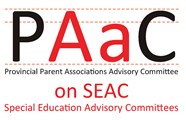Many school boards identify priority goals on a regular basis, either annually or as part of a multi-year strategic plan. School board plans are usually consistent with the Ministry of Education priorities. Currently, the Ministry of Education has four key goals:
- Achieving Excellence: Children and students of all ages will achieve high levels of academic performance, acquire valuable skills and demonstrate good citizenship. Educators will be supported in learning continuously and will be recognized as among the best in the world.
- Ensuring Equity: All children and students will be inspired to reach their full potential, with access to rich learning experiences that begin at birth and continue into adulthood.
- Promoting Well-Being: All children and students will develop enhanced mental and physical health, a positive sense of self and belonging, and the skills to make positive choices.
- Enhancing Public Confidence: Ontarians will continue to have confidence in a publicly funded education system that helps develop new generations of confident, capable and caring citizens.
SEAC members need to be aware of the Ministry goals and Board plans to support these goals. PAAC on SEAC recommends that SEAC also establish annual or priority goals. The goals may be in support of Ministry goals or boards plans, or may be focused on actions specific to SEAC. The identification of SEAC goals will help members to be clear about what they are trying to achieve. Development of measurable goals, and their completion, will enhance members’ sense of accomplishment and reinforce the value of SEAC.
The goal setting process can be scheduled at the end of the school year or the start of the next. PAAC on SEAC recommends that the goal setting process includes an accountability or evaluation component. The annual goal setting process includes identification of:
- Measurable outcomes – What will be accomplished? For example, a specific special education program or service review will be completed, or three information sessions will be delivered;
- Responsibilities – Who will be responsible for activities? For example, will all SEAC members be involved, or will a school board staff member or ad hoc committee lead the activity;
- Time lines – When will activities occur? For example, a new parent guide will be drafted in the fall, for review over the winter and printing and distribution in the spring;
- Interim measures – How will we know we are making progress on the goal? For example, participant evaluation forms from the first session will provide feedback to modify and improve the subsequent workshops;
- Evaluation process – How will we know what we did was worthwhile? This may include evaluation of both the outcomes and the process. For example, all the participants provide positive evaluations, but only 10 parents attended. SEAC may conclude that it was a lot of work, created worthwhile resources, but was an ineffective method to reach the majority of parents.
Developing an accountability mechanism within the goal setting process will ensure that information will be collected that can inform the evaluation of the current goals, and help to inform goal setting for the following year.
Effective Practices to support SEAC annual goals or actions include:
- Holding a special SEAC session, or schedule time in a meeting agenda, to identify priorities for the next year, or the whole four year SEAC term.
- Holding planning sessions, facilitated by staff or volunteers, to identify priorities and foster member participation.
- Approaches such as, pair and share, or small groups, to encourage participation by all members.
- Focusing on small projects that are achievable within the school year, such as review or development of parent resources, or development of a SEAC brochure, or communication strategy.
- Annual goals for training and professional development for SEAC members.
